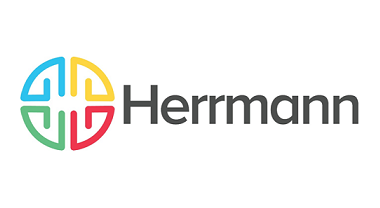Understanding the Extra-territorial Application in Cross Border Trademark Suit
The present case revolves around a dispute between the two parties where the main concern was the usage of 2 programs invented by the Plaintiff’s founder and it was before United States District Court for the Western District of North Carolina Asheville Division. The Plaintiffs Herrmann International, Inc. (“HI”) and Hermmann Global, LLC (“HG” and collectively the “Plaintiffs”) filed this action against the Defendants Herrmann International Europe (“HIE”), Herrmann Technologies (“HT”), Brain Resources (“BR”), and Lionel Marc Vuillemin (“Vuillemin”). The Plaintiffs are professional services companies that provide assessments of cognitive, behavioral, and personality traits for education, business management training, and leadership development.
The plaintiff’s founder created the first version of the Herrmann Brain Dominance Instrument (“HBDI”) assessment, which is a psychometric test that defines and describes the way individualsthink and The Herrmann Thinking Management System (“HTMS”) is a web application that allows authorized users to administer the HBDI assessment. The Plaintiff’s services included the HBDI assessment as well. The Plaintiffs to promote their founder’s research made use of several distinctive trademarks, including and various iterations of their four-color graphic logo as presented herein. At some point, the Plaintiffs decided to expand their business into European markets. To this end, the Plaintiffs entered into the License Agreement with Defendants HIE, HT, and BR. Defendant Vuillemin, who is a resident of France, serves as the president of HIE and HT and “controls” BR.
The License Agreement granted Defendants HIE, HT, and BR exclusive territorial rights to use the Herrmann Trademarks, the HG Copyrights, the Plaintiffs’ Trade Secrets, the Plaintiffs’ databases, the Plaintiffs’ resources, and the Plaintiffs’ proprietary information in exchange for them paying royalties, complying with the Plaintiffs’ business, brand and intellectual property policies, and participating in the Plaintiffs’ proprietary training, sales, and marketing programs. When in 2011, the Defendant Vuillemin wanted to retire, the parties started negotiations for the Plaintiff to purchase the Defendant companies but the said negotiations faultered. Thereafter,the Defendants breached the License Agreement by not making royalty payments, failing to comply with the Plaintiffs’ intellectual property policies, and seizing control of one of Plaintiffs’ computer servers.
Holding the above facts to be true, The Court held that the Plaintiff’s first claim that the Defendant’s breached the contract was true. The Court also held that the Plaintiffs’ factual allegations, are sufficient to pierce the corporate veil of Defendants HIE, HT, and BR. Therefore, the Court held Defendant Vuillemin individually liable for the breach of the License Agreement.
As for the trademark infringement claims, The Plaintiff made trademark violation and infringement claims against the Defendant under both, The Lanham Act as well as Common Law Trademark Infringement. In so far as The Lanham Act claims go, The Court concluded that the Lanham Act should not be applied extraterritorially in this case. When determining if Lanham Act can be applied extraterritorially, courts examine whether: (1) the Defendants’ conduct had a significant effect on United States commerce; (2) the Defendants are citizens of the United States; and (3) the issuance of an injunction would interfere with trademark rights under the relevant foreign law. Taking shelter of the second factor examines the citizenship of the Defendant, which the Court held as the most significant factor, the Court opined that Because the Defendants in this case are French citizens, the Court is more “reluctant to extend the reach of the Lanham Act” to their conduct. Another worry of attracting the Lanham Act was an ongoing proceeding between the two Parties in France regarding a licensing dispute allowing the Defendants to use the plaintiff’s trademarks globally and the ownership and status of foreign trademarks. The Court held that applying the Lanham Act would be “fraught with possibilities of discord and conflict with the authorities of another country.” \
Regarding the common law trademark infringement, Unlike claims under the Lanham Act, common law trademark infringement claims are not limited to “commerce which may be lawfully regulated by Congress.” and that likelihood of confusion is the basic test of both common law trademark infringement and federal statutory trademark infringement. the Court found that the Defendants’ infringement on the Herrmann Trademarks creates a likelihood of confusion since the Plaintiff’s mark hold global reputation and goodwill and are well known among businessmen and consumers.
The Plaintiffs further allege that the Defendants were provided with access to the materials incorporating the copyrighted materials and that the Defendants infringed in a material breach of the License Agreement. These factual allegations were deemed admitted by the Defendant by the Court. However, since those allegations appear to assert that the infringement was committed by foreign citizens outside of the United States, the Copyright Act “is considered to have no extraterritorial reach” unless the plaintiff can show that the “predicate-act doctrine” applies.To invoke the predicate-act doctrine,a plaintiff is required to show a domestic violation of the Copyright Act and damages flowing from foreign exploitation of that infringing act.The Court held that since the damages flow from the Defendants’ extraterritorial exploitation of those domestic violations, the Copyright Act can be applied extraterritorially in this case.
Regarding lost profits, The Court found that the Plaintiffs proffered insufficient evidence to establish that their lost profits are attributable to the Defendants’ actions and for that reason the Court could not conclude that the Defendants are responsible for the Plaintiffs’lost profits. The Court acknowledged that Defendants disclosed the Trade Secrets to other parties and used the Trade Secrets without authorization. Having established that the Defendants breached and disavowed the License Agreement, they had no further authority to access, use or disclose the Trade Secrets. Thereby, The Court affirmed the Plaintiff’s claim for misappropriation of trade secrets against the Defendant as well.
To obtain a permanent injunction, the Plaintiffs had to show that (1) they have suffered an irreparable injury; (2) remedies available at law,such as monetary damages, are inadequate to compensate for that injury; (3) considering the balance of hardships between plaintiffs and defendants, remedy in equity is warranted; and (4) public interest would not be disserved by permanent injunction. The Court held that all four factors weighed in favor of imposing a permanent injunction here. Accordingly, the Court entered a permanent injunction enjoining the Defendants, acting individually or in concert with other people or entities or acting directly or indirectly, from infringing the Plaintiffs’ intellectual property policies.
Author: Saransh Chaturvedi an associate at IP And Legal Filings, in case of any queries please contact/write back us at support@ipandlegalfilings.com.




